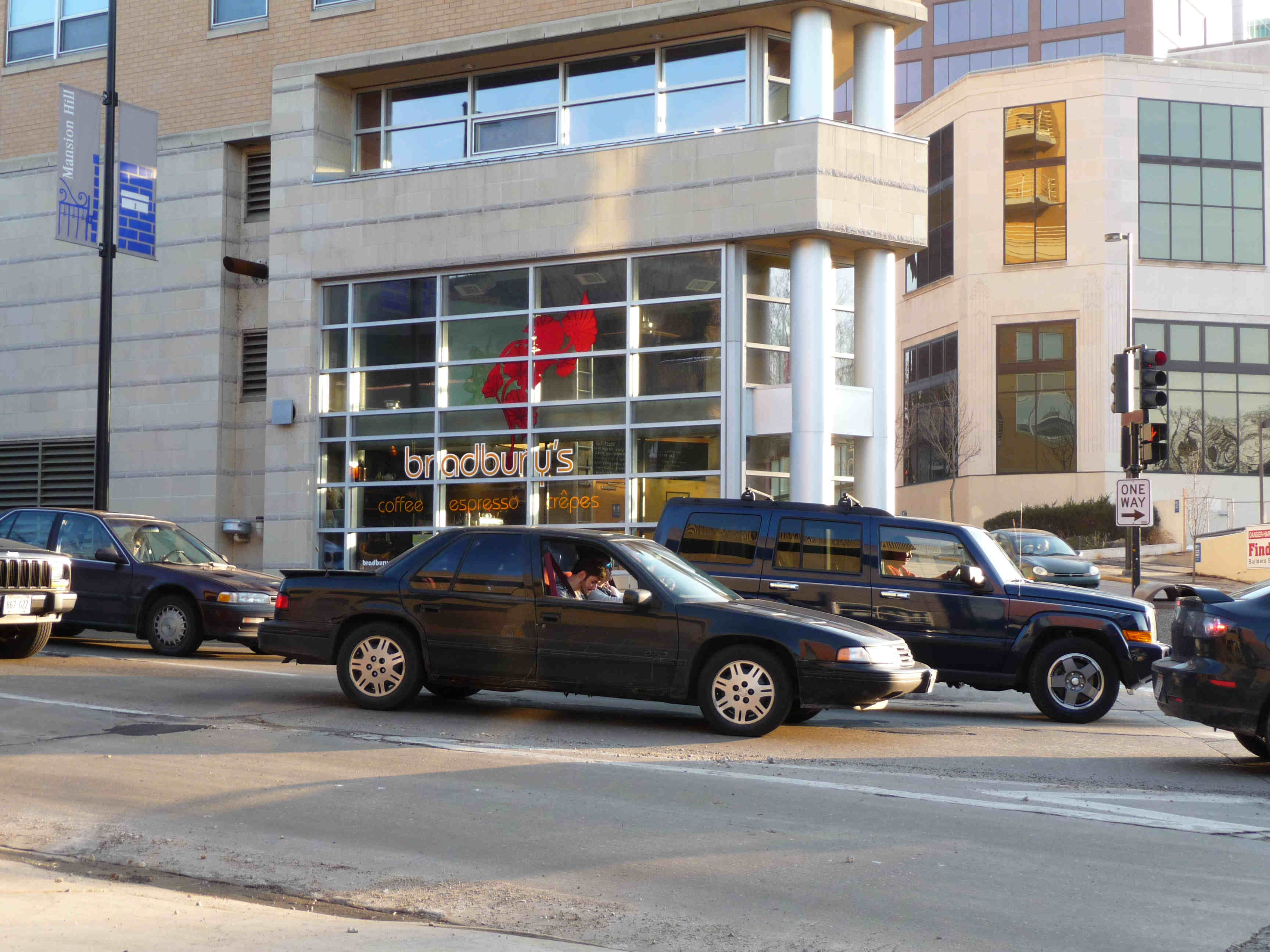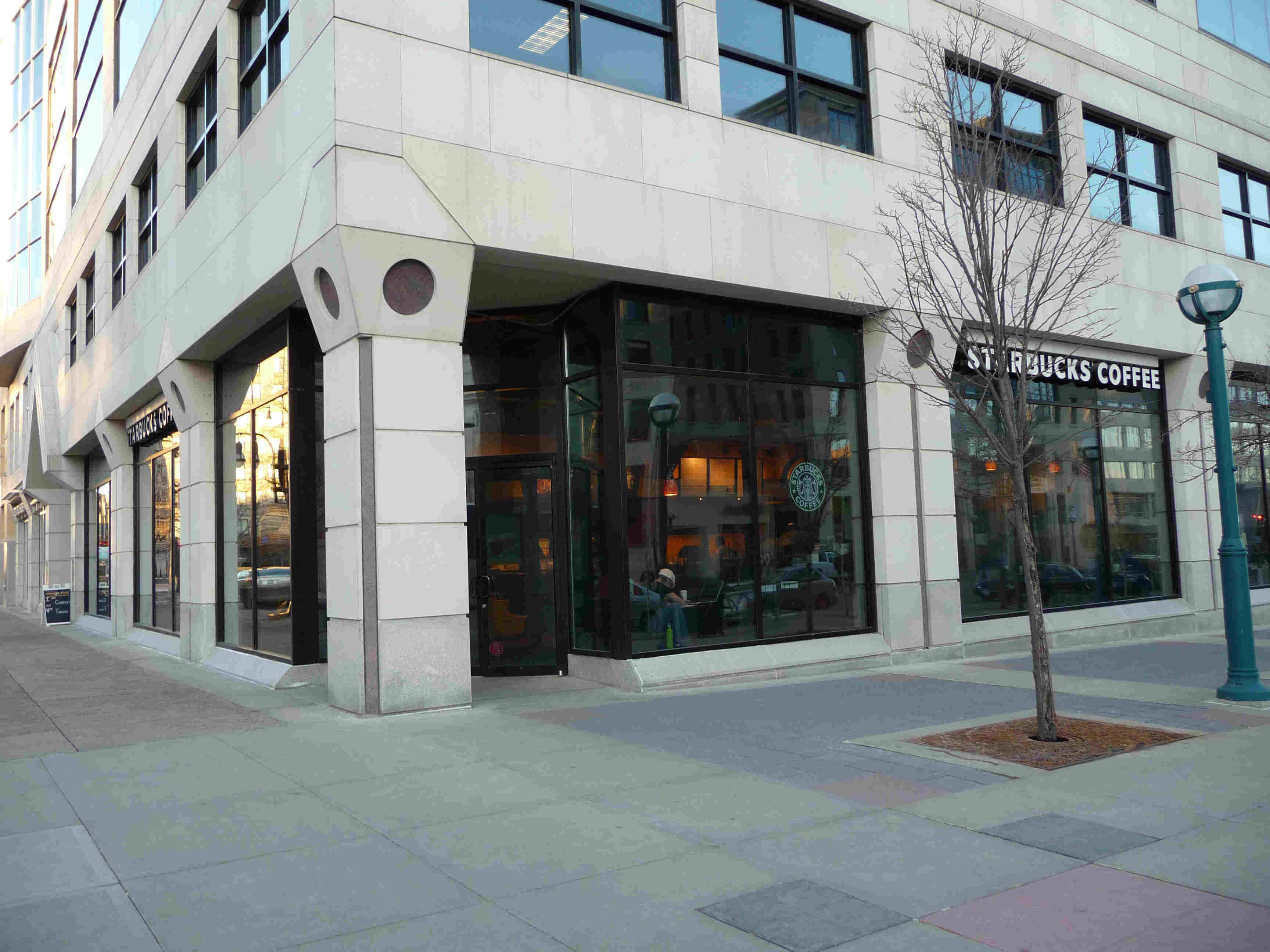I’ve just finished reading a book about ecological city building by Richard Register. In Ecocities, Register proposes that the current methods of city planning, which advocate single use zoning and great distances, are horribly inadequate. The cities most of us live in are zoned such that people live far from where they work and shop; each human activity has its own area in the modern city; this makes car travel the most practical method. There are of course some exceptions (if one lives in Manhattan, for example, it would be quite easy to never leave the island) but for the most part, this is an accurate model of the suburban city.
It doesn’t take too much effort to realize the problem with the single use zoning. It is tremendously inefficient. Most people travel with their car every day to and from work; they are not using the space that the automobile provides; in order to simply move themselves, they have to bring along something that weighs a ton or so. Why do we agree to live with such an arrangement? Well, suburbs promise to be pleasant, for one; after all, cities can be rather stressful places to live. And it seems like a good idea to have a plot of land to oneself (though it seems like this land is so often wasted by planting huge tracts of grass….). Compound this with the abundance of cheap energy in the form petroleum and you get the current trend for civilization to sprawl over all the landscape. Driving to far off places is cheaper than buying land in the polluted and noisy city, so it is hard to see an argument against such a sprawl.
Register seems to think that the main problem with our current arrangement is the way it ruins lives, both animal and human. It devastates ecosystems as well as creates a dangerous and violent environment in which heavy objects (automobiles) whizz through the air at great speeds. People also become emotionally separated from each other because of their great physical distances from one another. I think these are all good reasons for hating cars (though I’m not sure the last one is so true, given how much New Yorkers despise each other) but the most pressing concern originating from the petroleum induced sprawl is the imminence of ‘peak-oil’ .
Reaching ‘peak-oil’ means that we have reached the point where petroleum production will begin to decline. This is built into the concept of a finite resource like fossil fuels; we will someday run out. This is why they are not sustainable sources of energy. Fossil fuels are truly amazing in most respects. In case you haven’t stopped and thought about it, try to imagine how much it would cost you to have your car towed across town by a team of animals. Beasts of burden are very expensive to feed and take care of, but this could be accomplished for a few dollars using an internal combustion engine. With this in mind, it isn’t a stretch to consider the cultural and technological boom of the 20th century to be a result of petroleum. And now imagine the disaster that could ensue if it is used up.
In my opinion, Register’s most important point (one that is also expressed by other people concerned about peak-oil) is that we must re-structure our cities in order to survive after oil is gone. It will no longer be economical to drive to work if you live 30 miles away; therefore we need to build communities that are ‘walkable’, in which you could walk to work, to the store, and home again. He also would like to see extensive use of bicycles in his ‘ecocities’ but they should not be the primary method of transportation. He advocates a major movement of people from the suburbs and non-productive rural areas (places not involved in agriculture) to inside the city. This would cause the density of cities to increase dramatically, though he wishes to mitigate this problem by ensuring that architecture produces cities in which people would want to live. This includes numerous natural spaces and gardens that would also have the effect of increasing biodiversity. To get an idea of what this would entail, I calculated the density that would result from the current population of Madison moving into an area similar to (though quite a bit larger than) Register’s vision of an ecocity; I found that the density would be about 12,000 people /square mile. This is similar to the density of a city like Chicago.
Whether the sort of population density envisioned by Register would be desired by people is not clear. He seems to portray this arrangement as some sort of Utopia; I have my doubts as to whether people are capable of creating such places (there certainly are few examples in history of society working this well). However, I do not doubt that a radical increase in density will be required given the coming scarcity of transportation fuels. I don’t think it is likely that we will be able to completely replace our current levels of fossil fuel energy with sustainable sources, and therefore, a radical reduction in energy consumption is almost certainly necessary. But how do we accomplish this without displacing large populations who will be short of food and other resources? I’m not sure that we can shove density down the throats of citizens who are, for the moment, enjoying very cheap energy. Hopefully, people will slowly come to realize the unsustainable nature of suburban living and migrate to communities that have all the necessities of life within a reasonable distances. If this does not happen, and there is a sudden oil ‘crash,’ then it might be best to obtain a nice piece of land and a whole lot of guns; because if large groups of people are not prepared for the sudden drop of energy availability, and must fight to survive, things could get quite ugly. This is clearly what Register hopes to avoid.
I have many other thoughts about this topic, but hopefully this serves as an adequate introduction. There are other voices in this debate, including the more moderate ‘New Urbanists‘ who have been far more successful than Register. I’ll certainly see what they have to say as well.








